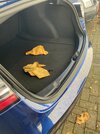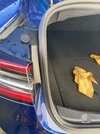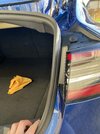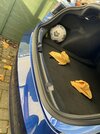Well, guys, no doubt
@KenC is right,
My one was changed, and I had the same issue; it just didn't feel right; also trunk stopped closing smoothly.
I went and pulled that lip out and look at that, so nice and the trunk problem went away.
It looks great!
I'm really shocked that the Tesla service manual says the bottom should be tucked in, that really doesn't make sense to me.
Sometimes I think manuals are written poorly, which leads to confusion. Just look at what was written.
If you just look at that main instruction part. There's only one part of the seal that can fit into the perimeter of the trunk. And, yes, you should press it firmly to seat it, or use a rubber hammer. THEN, use a plastic trim tool to fully install the trunk seal to the body.
Just think about that last part. After hammering the seal, why would you need a plastic trim tool to "fully install" the trunk seal? You use the trim tool to pull out the edge to cover the exposed plastic edge of the bumper cover. It's funny, because that's exactly what I did, intuitiveIy, I used an orange plastic trim tool to pull out that edge. There's really no other purpose for using a plastic trim tool, after you've hammered the seal to the perimeter of the trunk.
Part of the confusion is they use the term "trunk seal" for both steps. But, I know I have had difficulty describing the flap, whether it's an edge, a flange, a flap, etc. Maybe they did too?
It's the final "note" that increases the confusion.
But what is the "bottom"? If there's a bottom of the seal, that implies that there's another part, the top, the edge? The bottom is already tucked into the fascia, as it's installed on the perimeter of the trunk. That's the lowest part of the seal, and the only part that can reasonably be described as a "bottom of the seal". Would you call the edge, the flap, the flange, also the "bottom"? I wouldn't.






